Effect on Rotation Speed on Thermal Dehydration Characteristics of Waste Gypsum Particles in a Constant Volume Rotary Vessel by Heating
Abstract
:1. Introduction
2. Experiment
2.1. Experimental Equipment
2.2. Particles Used and Experimental Conditions
3. Results
3.1. Conversion Characteristics of Gypsum
3.2. Effect of Rotation Speed on Conversion Characteristics of Gypsum
4. Conclusions
- (1)
- It was confirmed that the temperature distribution against the heating time changed due to the difference in the flow pattern of particles in a rotary vessel when the rotation speed was varied.
- (2)
- Temperature and pressure distribution in regions I to IV depends on the detachment of crystallized water from the gypsum.
- (3)
- It was found that the desorption of gypsum crystal water was promoted when the rotary vessel’s rotation speed was increased. As a noteworthy point, the pressure inside the vessel in region IV increased rapidly. The result indicates that the crystallized water was released from the gypsum.
- (4)
- We obtained the conversion characteristics of CaSO4∙2H2O to CaSO4∙0.5H2O using a constant-volume rotary vessel. In the present heating equipment, the mass fraction of CaSO4∙0.5H2O increased when the temperature was 180 °C and rotation was applied.
Author Contributions
Funding
Institutional Review Board Statement
Informed Consent Statement
Data Availability Statement
Acknowledgments
Conflicts of Interest
References
- Kanto Branch of Japanese Geotechnical Society. Research Report on Applying Soil Improvement Material of Recycling Waste Plasterboard; Kanrto Branch of Japanese Geotechnical Society: Tokyo, Japan, 2013; pp. 3–19. [Google Scholar]
- Horai, H.; Kamei, T.; Ogawa, Y.; Shibi, T. Development of Bassanite Production System and its Geotechnical Engineering Significance -Recycling of Waste Plasterboard. Jpn. Geotech. J. 2008, 3, 133–142. [Google Scholar] [CrossRef]
- Kamei, T.; Shuku, T. Unconfined Compressive Strength of Cement-Stabilized Soils Containing Bassanite Produced from Waste Plasterboard. Jpn. Geotech. J. 2007, 2, 237–244. [Google Scholar] [CrossRef]
- Kamei, T.; Kato, T.; Shuku, T. Effective Use for Bassanite as Soil Improvement Materials -Recycling of Waste Plasterboard. Jpn. Geotech. J. 2007, 2, 245–252. [Google Scholar] [CrossRef]
- Matsuda, H.; Nakashima, K.; Umemoto, M.; Ito, Y. Recycling of Gypsum Waste and used to Ground Improvement Solidification Materials. Res. Rep. Fac. Eng. Nagasaki Univ. 2009, 39, 28–35. [Google Scholar]
- Sano, H.; Yamada, M.; Kotake, N.; Inazumi, S.; Kuwajima, K. Proposal of Estimating Equations on Water Content of Stabilized Soils by Reclaimed Gypsums. Jpn. Geotech. J. 2015, 10, 603–610. [Google Scholar]
- Ahmed, A.; Soliman, A.M.; EI Naggar, M.H.; Kamei, T. An assessment of geo-environmental properties for utilization of recycled gypsum in earthwork projects. Soil Found. 2015, 55, 1139–1147. [Google Scholar] [CrossRef]
- Shigematsu, H.; Nishiki, Y.; Nishizawa, M.; Ikemura, H. Discussion on the lime soil stabilization of acid sulfate soil. J. Jpn. Soc. Civ. Eng. Ser. C 2009, 66, 425–430. [Google Scholar] [CrossRef]
- Shigematsu, H.; Nishizawa, M.; Yabushita, R.; Yoshimura, K.; Tanaka, H.; Tsuji, K. Mechanical properties od lime stabilized soil with recycled bassanite derived from waste plaster board. J. Jpn. Soc. Civ. Eng. Ser. C 2013, 69, 272–284. [Google Scholar]
- Van Driessche, A.E.S.; Stawski, T.M.; Kellermeier, M. Calcium sulfate precipitation pathways in natural and engineered environments. Chem. Geol. 2019, 530, 119274. [Google Scholar] [CrossRef]
- Marion, G.M.; Catling, D.C.; Kargel, J.S.; Crowley, J.K. Modeling calcium sulfate chemistries with applications to Mars. Icarus 2016, 278, 31–37. [Google Scholar] [CrossRef]
- The Society of Inorganic Materials. Cement, Gypsum and Lime Handbook; Gihodo Shuppan: Tokyo, Japan, 1996; pp. 138–143. [Google Scholar]
- Komossa, H.; Wirtz, S.; Scherer, V.; Herz, F.; Specht, E. Heat transfer in direct heated rotary drums filled with monodisperse spheres: Comparison of experiments with DEM simulations. Powder Technol. 2015, 286, 722–731. [Google Scholar] [CrossRef]
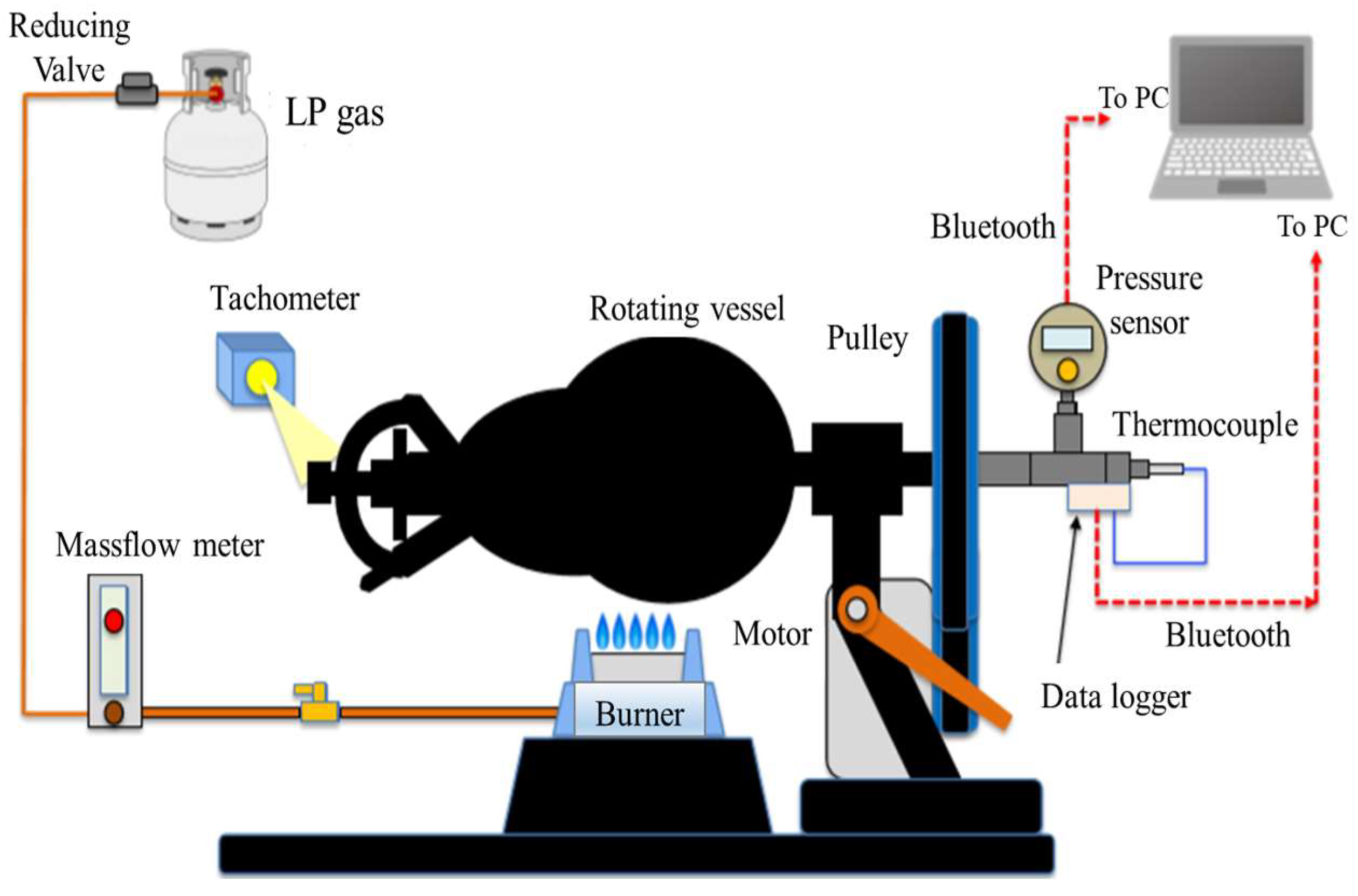
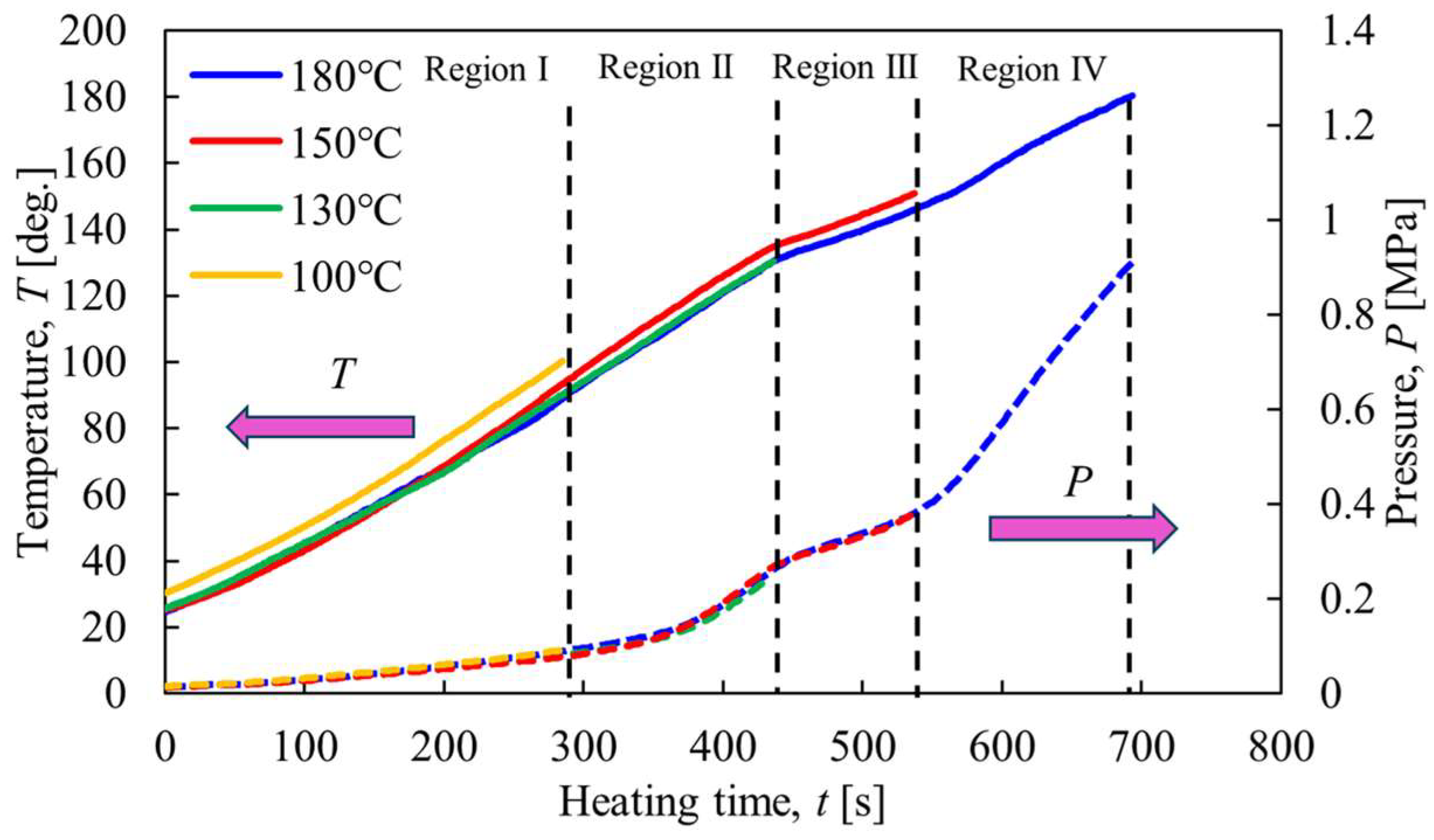

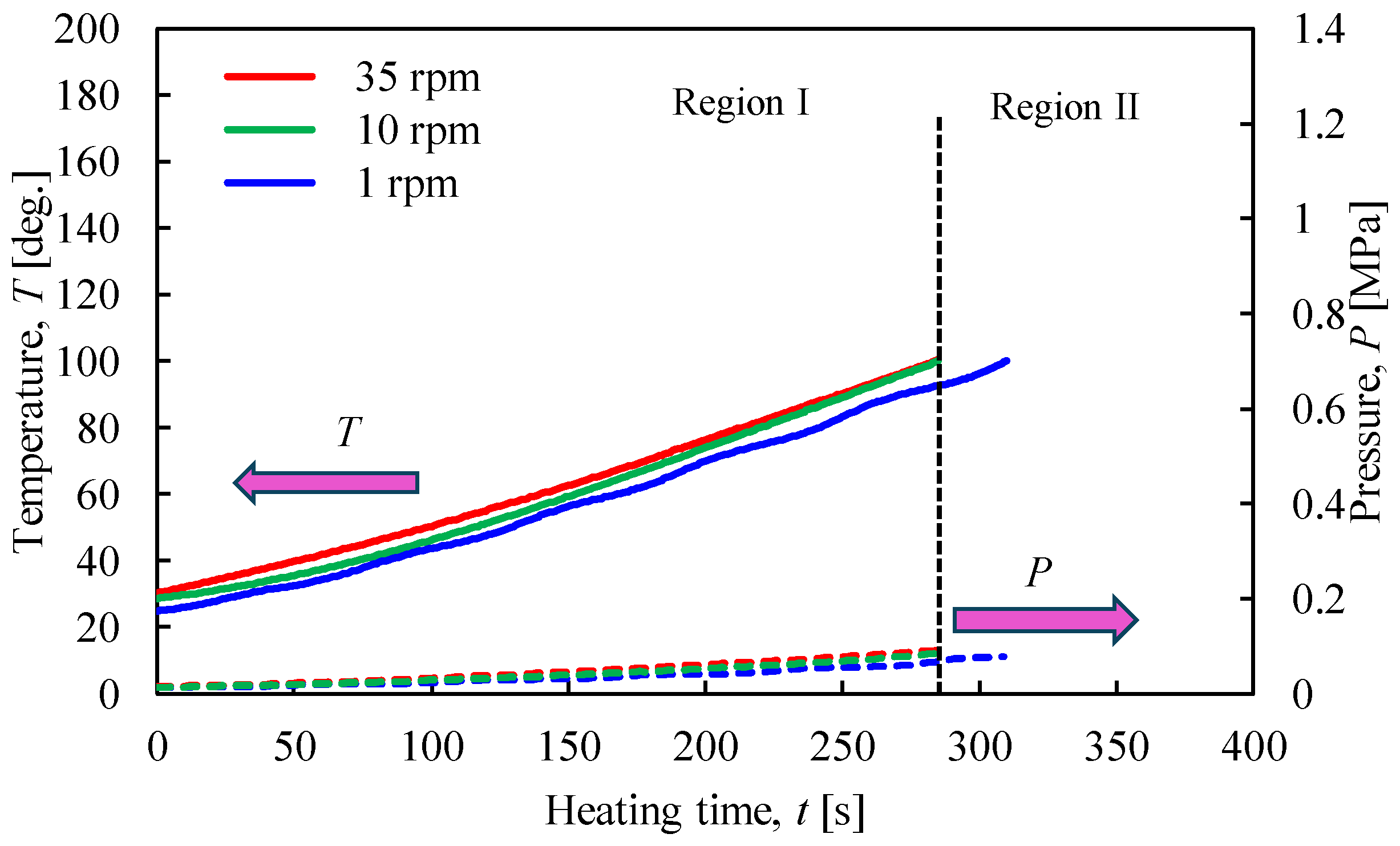

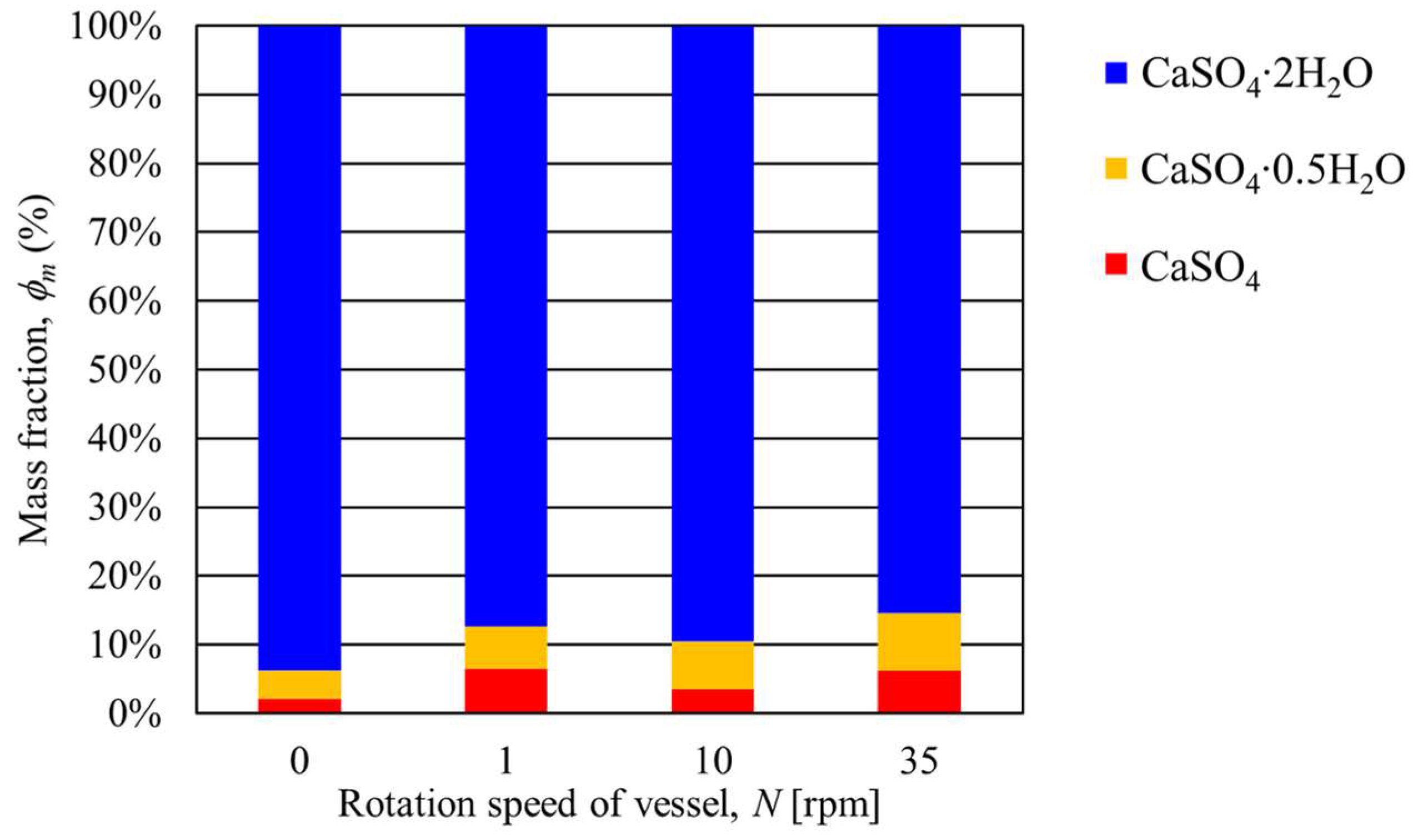
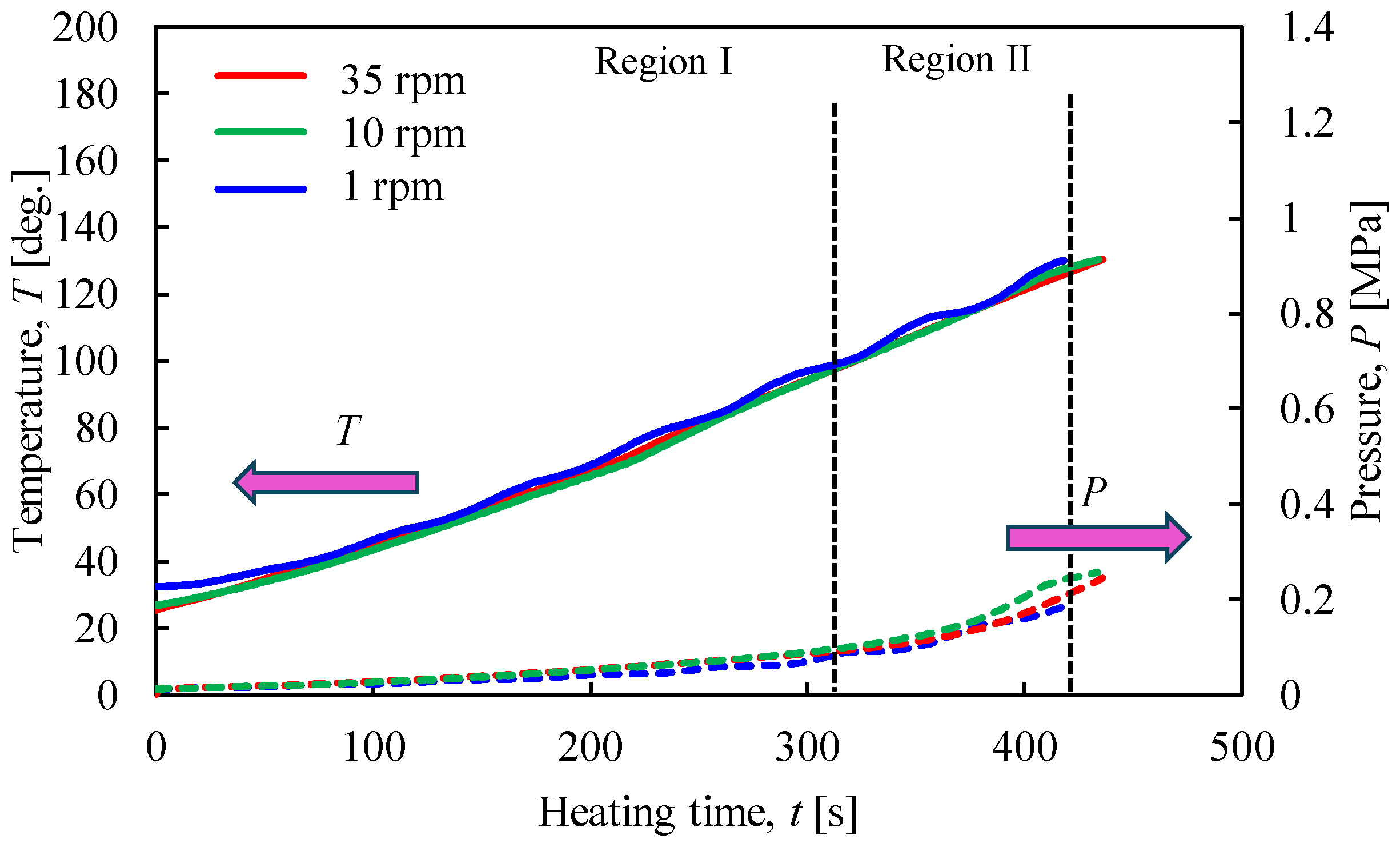

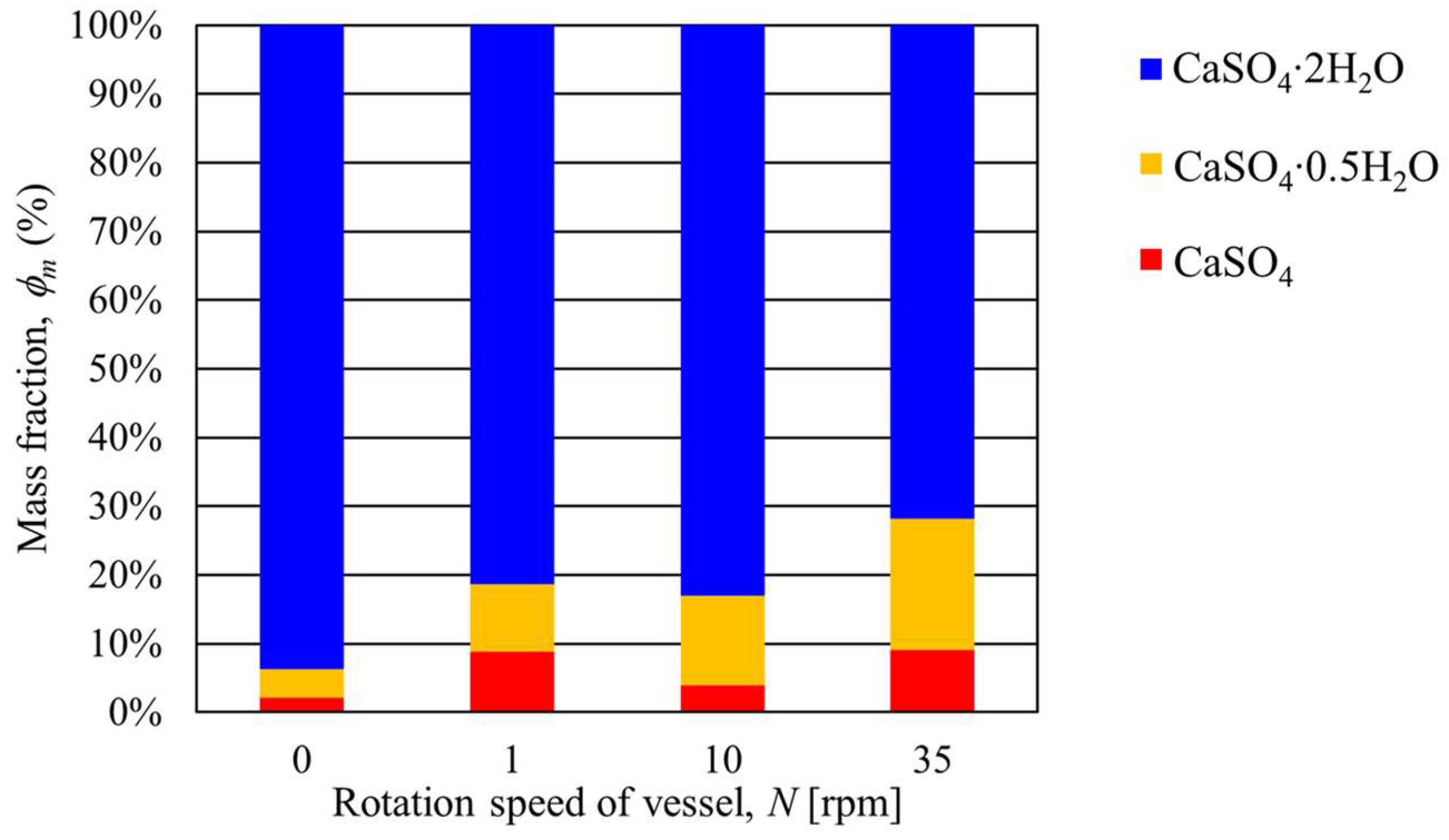




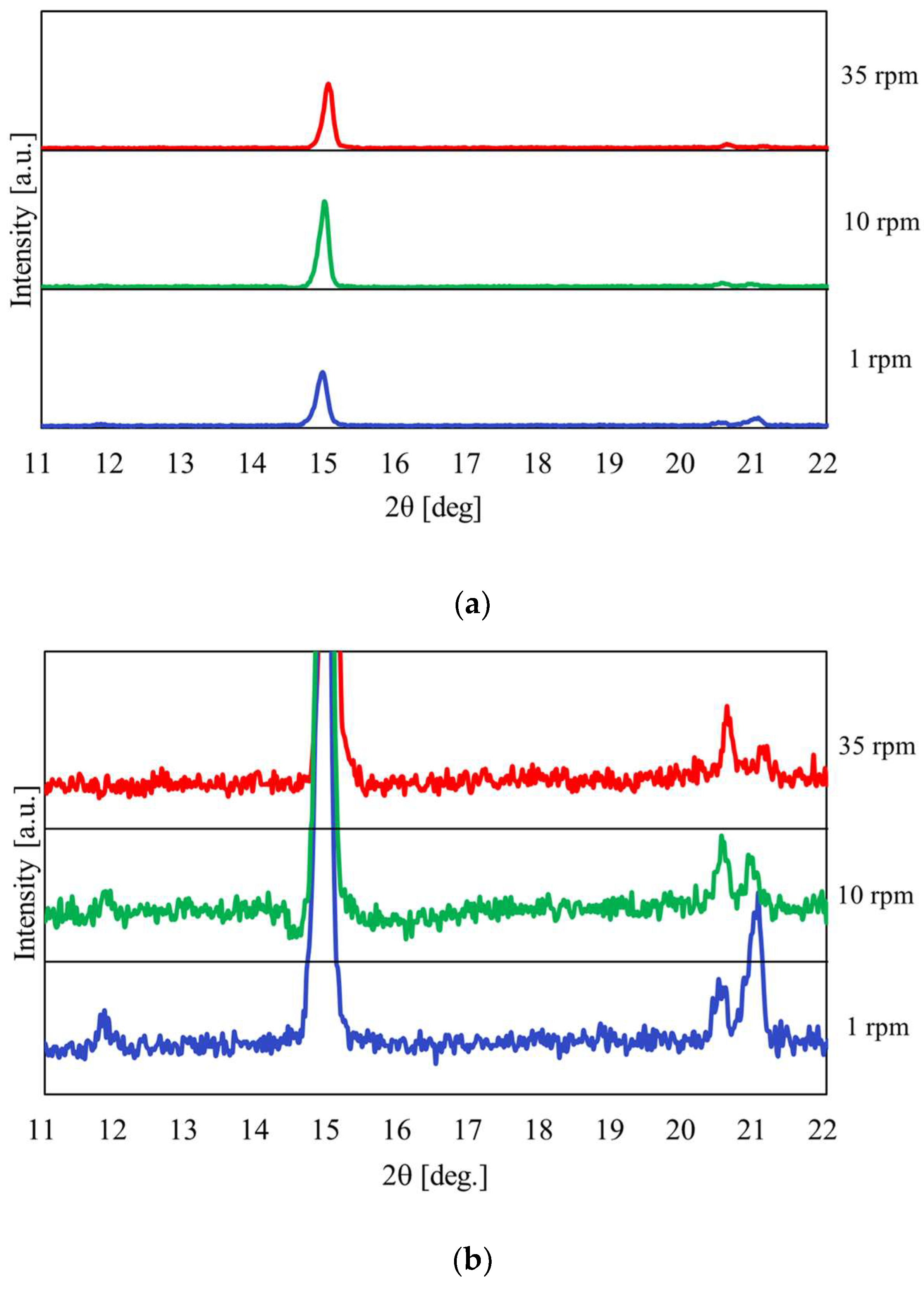
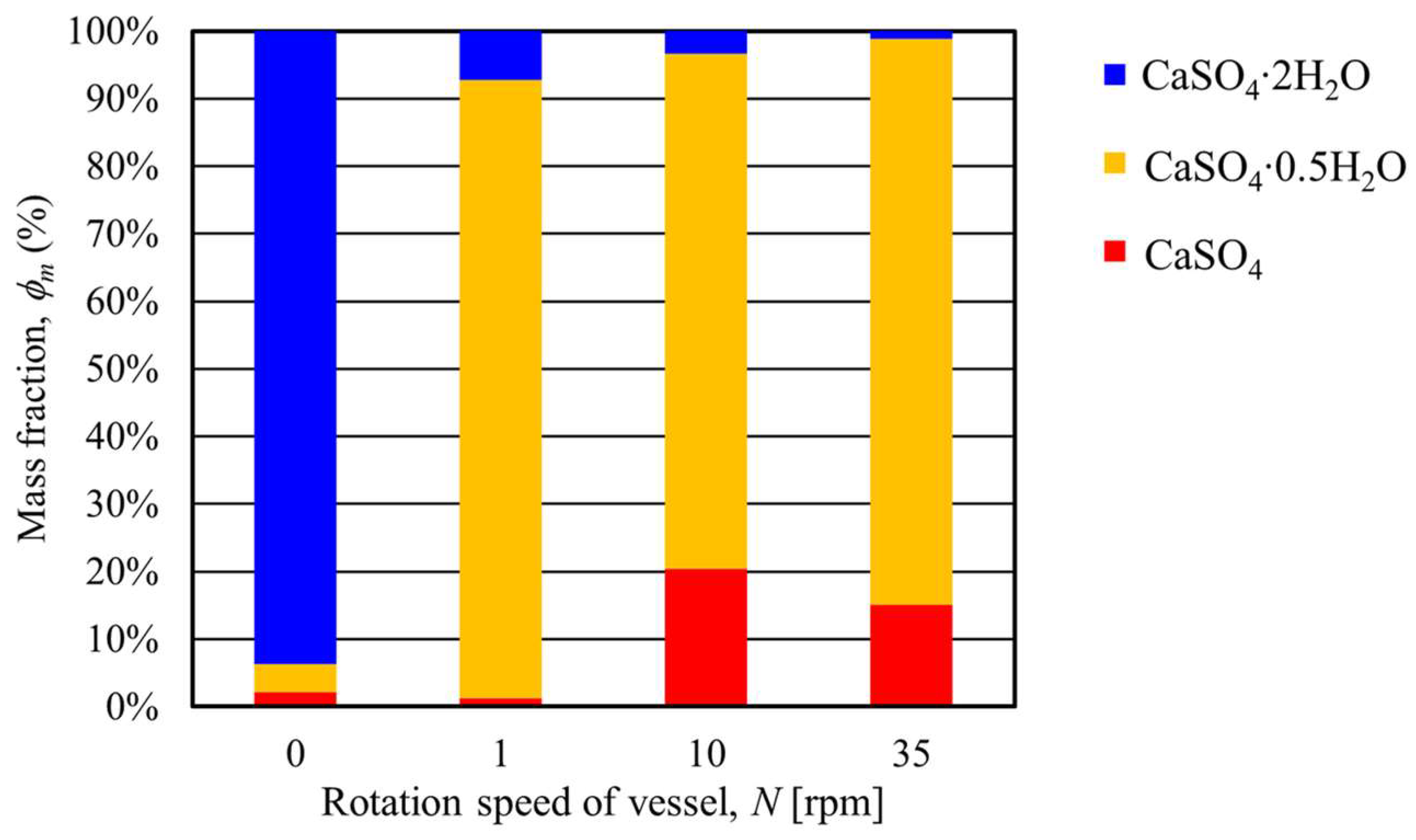
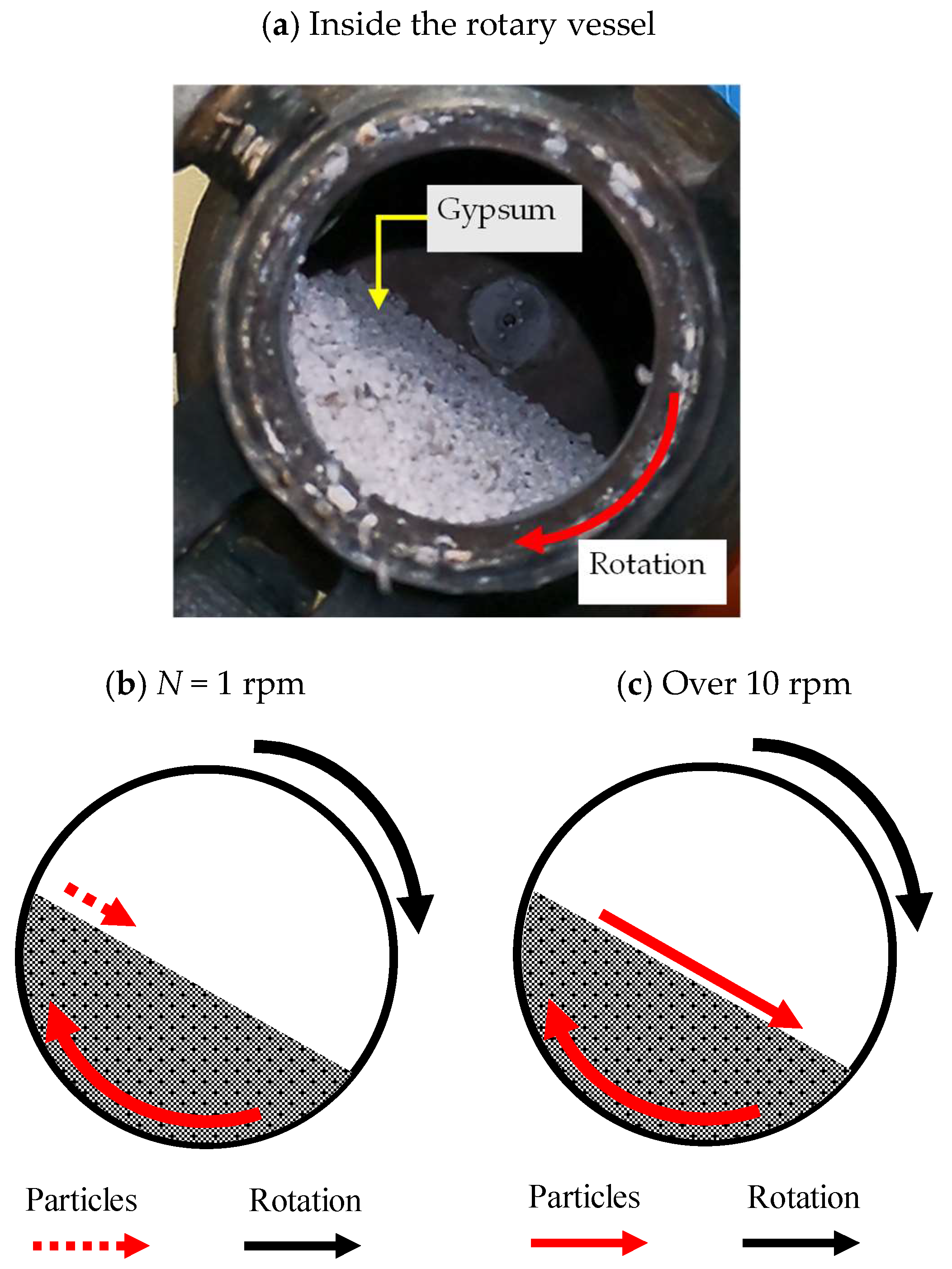
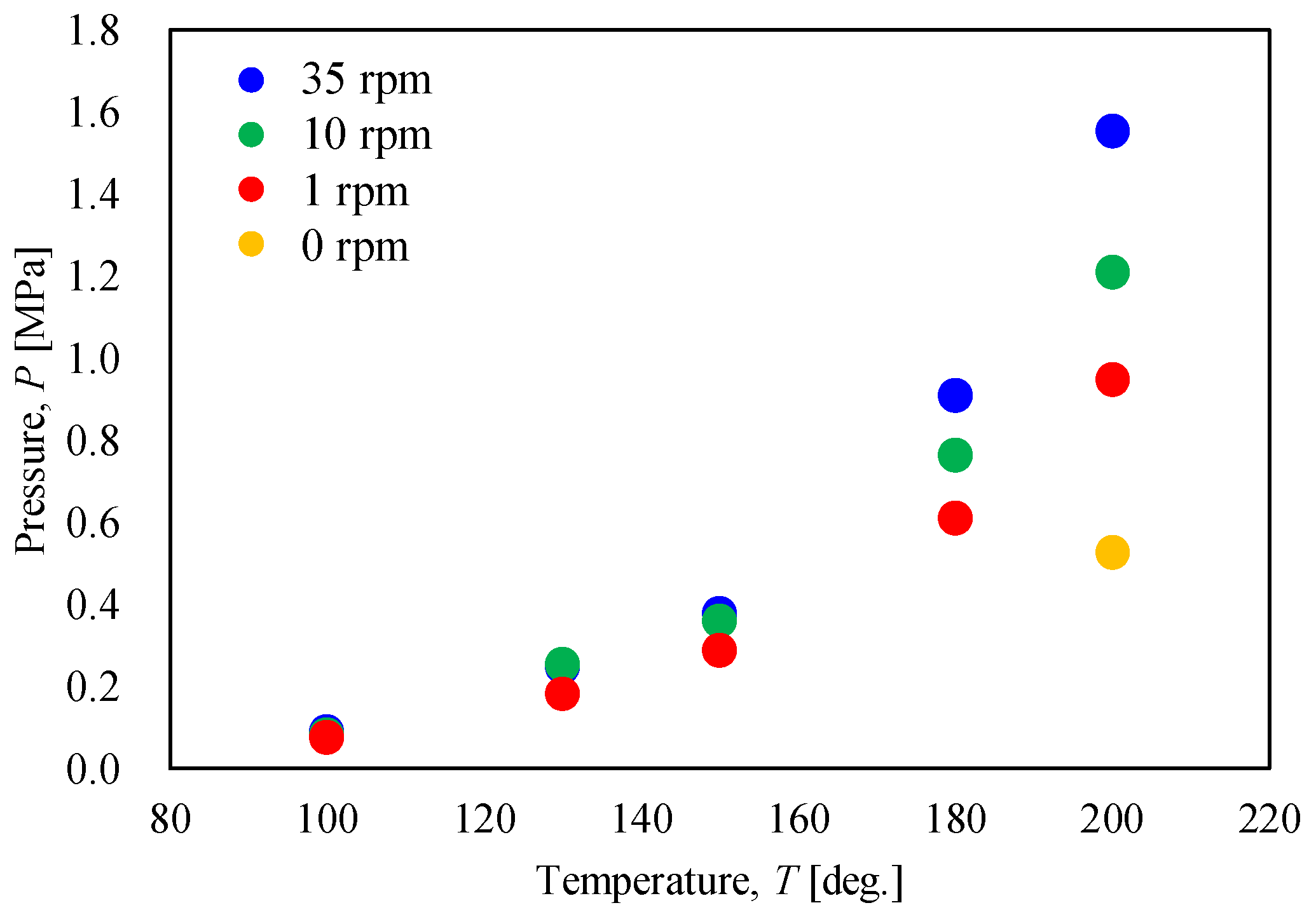
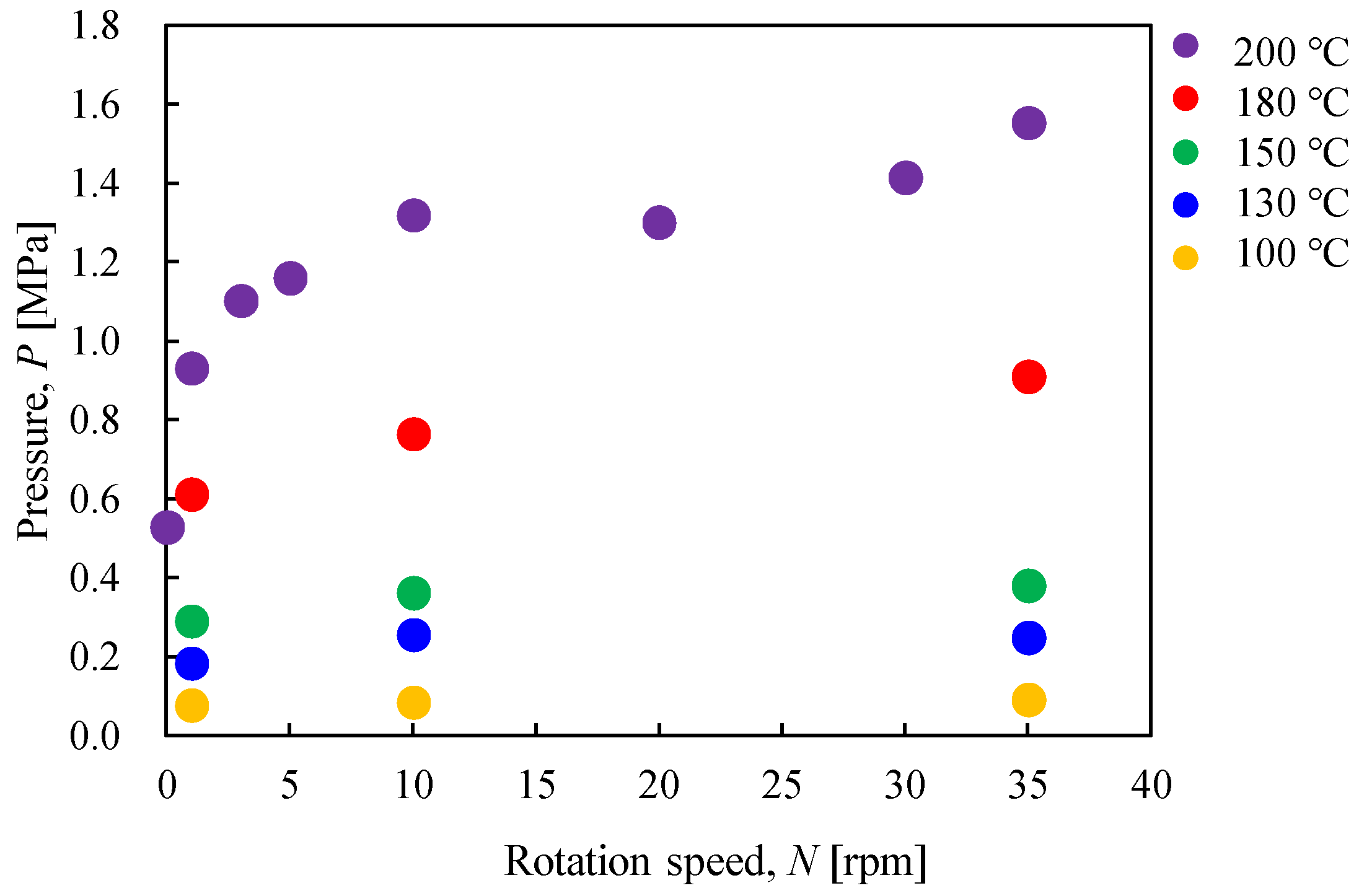
| N (rpm) | T (°C) | CaSO4∙2H2O ϕm (%) | CaSO4∙0.5H2O ϕm (%) | CaSO4 ϕm (%) |
|---|---|---|---|---|
| 0 | 0 | 93.74 | 4.14 | 2.13 |
| 1 | 100 | 87.30 | 6.18 | 6.52 |
| 10 | 100 | 89.49 | 6.96 | 3.56 |
| 35 | 100 | 85.44 | 8.44 | 6.22 |
| N (rpm) | T (°C) | CaSO4∙2H2O ϕm (%) | CaSO4∙0.5H2O ϕm (%) | CaSO4 ϕm (%) |
|---|---|---|---|---|
| 0 | 0 | 93.74 | 4.14 | 2.13 |
| 1 | 130 | 81.41 | 9.77 | 8.89 |
| 10 | 130 | 82.98 | 13.06 | 3.95 |
| 35 | 130 | 71.89 | 19.04 | 9.07 |
| N (rpm) | T (°C) | CaSO4∙2H2O ϕm (%) | CaSO4∙0.5H2O ϕm (%) | CaSO4 ϕm (%) |
|---|---|---|---|---|
| 0 | 0 | 93.74 | 4.14 | 2.13 |
| 1 | 150 | 52.87 | 38.58 | 8.66 |
| 10 | 150 | 39.41 | 51.91 | 8.56 |
| 35 | 150 | 37.39 | 51.01 | 11.60 |
| N (rpm) | T (°C) | CaSO4∙2H2O ϕm (%) | CaSO4∙0.5H2O ϕm (%) | CaSO4 ϕm (%) |
|---|---|---|---|---|
| 0 | 0 | 93.74 | 4.14 | 2.13 |
| 1 | 180 | 7.27 | 91.48 | 1.25 |
| 10 | 180 | 3.35 | 76.19 | 20.45 |
| 35 | 180 | 1.14 | 84.00 | 15.20 |
Disclaimer/Publisher’s Note: The statements, opinions and data contained in all publications are solely those of the individual author(s) and contributor(s) and not of MDPI and/or the editor(s). MDPI and/or the editor(s) disclaim responsibility for any injury to people or property resulting from any ideas, methods, instructions or products referred to in the content. |
© 2024 by the authors. Licensee MDPI, Basel, Switzerland. This article is an open access article distributed under the terms and conditions of the Creative Commons Attribution (CC BY) license (https://creativecommons.org/licenses/by/4.0/).
Share and Cite
Ogata, K.; Arimura, K.; Gotoh, H.; Satoh, K.; Tokumaru, K.; Kawahara, H.; Sano, H. Effect on Rotation Speed on Thermal Dehydration Characteristics of Waste Gypsum Particles in a Constant Volume Rotary Vessel by Heating. Materials 2024, 17, 1276. https://doi.org/10.3390/ma17061276
Ogata K, Arimura K, Gotoh H, Satoh K, Tokumaru K, Kawahara H, Sano H. Effect on Rotation Speed on Thermal Dehydration Characteristics of Waste Gypsum Particles in a Constant Volume Rotary Vessel by Heating. Materials. 2024; 17(6):1276. https://doi.org/10.3390/ma17061276
Chicago/Turabian StyleOgata, Koichiro, Kotetsu Arimura, Hayate Gotoh, Kai Satoh, Kazuki Tokumaru, Hideo Kawahara, and Hiroaki Sano. 2024. "Effect on Rotation Speed on Thermal Dehydration Characteristics of Waste Gypsum Particles in a Constant Volume Rotary Vessel by Heating" Materials 17, no. 6: 1276. https://doi.org/10.3390/ma17061276






